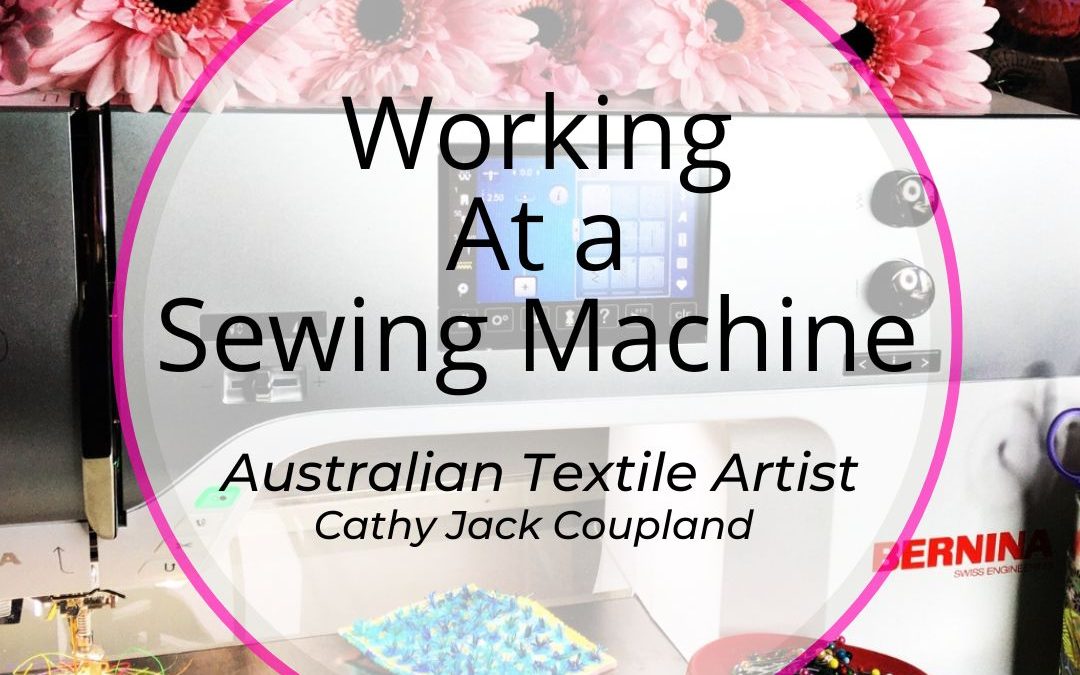Do you work with a sewing machine?
Most homes include a sewing machine or two – and for good reason.
Making, repairing, creating – the sewing machine handles it all.
Over the last three weeks, I’ve completed three new art quilts for an upcoming exhibition.
They’re fully machine-made using hand-guided free-motion embroidery, my go-to technique.
It had me thinking about time spent sitting and working at the machine because it can be surprisingly tiring on the body.
Are there tips and tricks to spending all day with your head down, listening to that purr of a good machine doing its thing?
Of course, there are.
If you work consistently at your machine, you will have formed some habits that will help maintain that workload enabling consistency and longevity – or you should.
Everything I know, I’ve learned through experience, the sore hands, back, neck and even legs – all from working at my machine.
In my book, prevention is key here, so taking time out to exercise, walk, and ensure your work area is set up correctly makes a lot of common sense.
So let’s get to the nitty-gritty of what I do to help ensure I can work at my machine for lengthy periods.
- There’s no point even bothering if you don’t have good lighting – many new machines now come with in-built lighting like my Bernina 720. It’s so good I don’t use any other lighting, but if you work on an older machine, ensure you have good lighting.
- Ensure your machine is at the right height for you to work – I put a few magazines under mine to bring it up just a little.
- Is your seat set at the correct height for your machine? To set the seat at the correct height for me, I have to use books under my feet because I’m not tall. They work.
- I also have my presser foot aligned so my hips are even as I’m working.
- By doing all of the above, my arms, legs and hips should be correctly aligned with the work surface, machine and seating.
- In a perfect world, you’d have space all around your machine, particularly to the left and back but sometimes you just have to work with what you have, so organize that area to your best ability.
- I like to work with my tools to my right and threads and bobbins to my left, so I know exactly where everything is. There’s nothing more frustrating than having to stop work to look for a particular item that’s not where it should be. It does happen though.
- I begin every day by oiling and cleaning the machine. It takes moments and is essential.
- As soon as I hear that needle popping into the fabric, I change it out for a new one. I use titanium-coated needles because they’re stronger and last longer.
- Breaks are essential. It’s all too easy to lose the concept of time when you’re working but trust me, taking a break will not only energize but offer a chance to stretch and rest our bodies.
- A brisk walk outside ensures our eyes focus on distances.
- This is the time to also stretch our hands – just simple stretches to reinvigorate can make a huge difference. Some of my work can become heavy towards the end of stitching – exercising my hands helps.
- A regular exercise regime incorporating stretching, movement and weights may be beneficial – but that’s personal. All three help me. Check with your medical practitioner first.
- If you’re feeling any pain at all – stop work and take immediate action.
These are all simple steps to implement into any stitching routine and may ensure the time spent working at a sewing machine is not only productive but enjoyable.
So if you need to work at your machine for long periods, think about being proactive to try to head off any difficulties.
I’ve reached a stage where I can work all day at my machine and am highly productive – I’ve made a compilation YouTube video Hand Guided Free Machine Embroidery. It highlights the work I’ve done over the last five years or so. Check it out.
I love designing and seeing new work come to life under the needle.
What works for you?

All views and opinions expressed are my own, except where acknowledged information is included from other sources.

